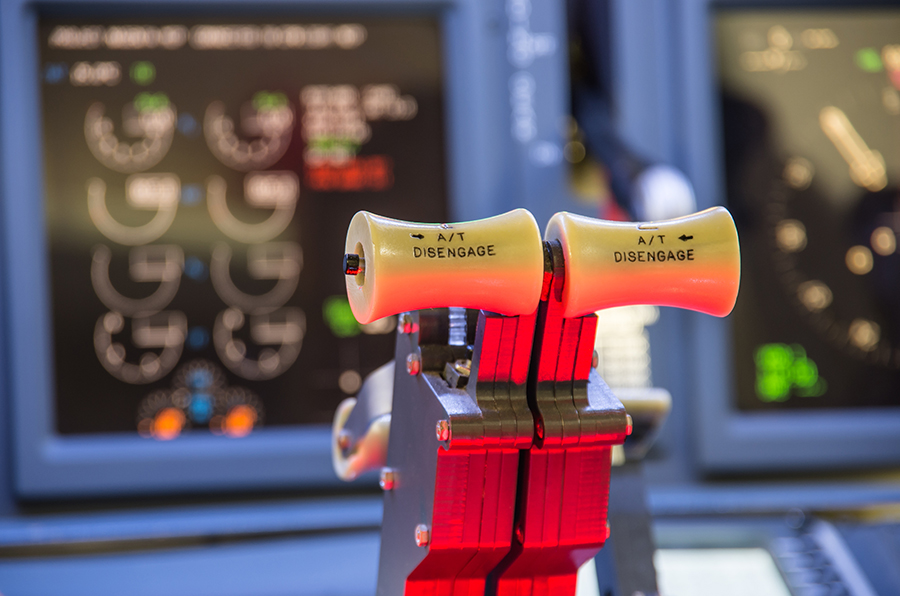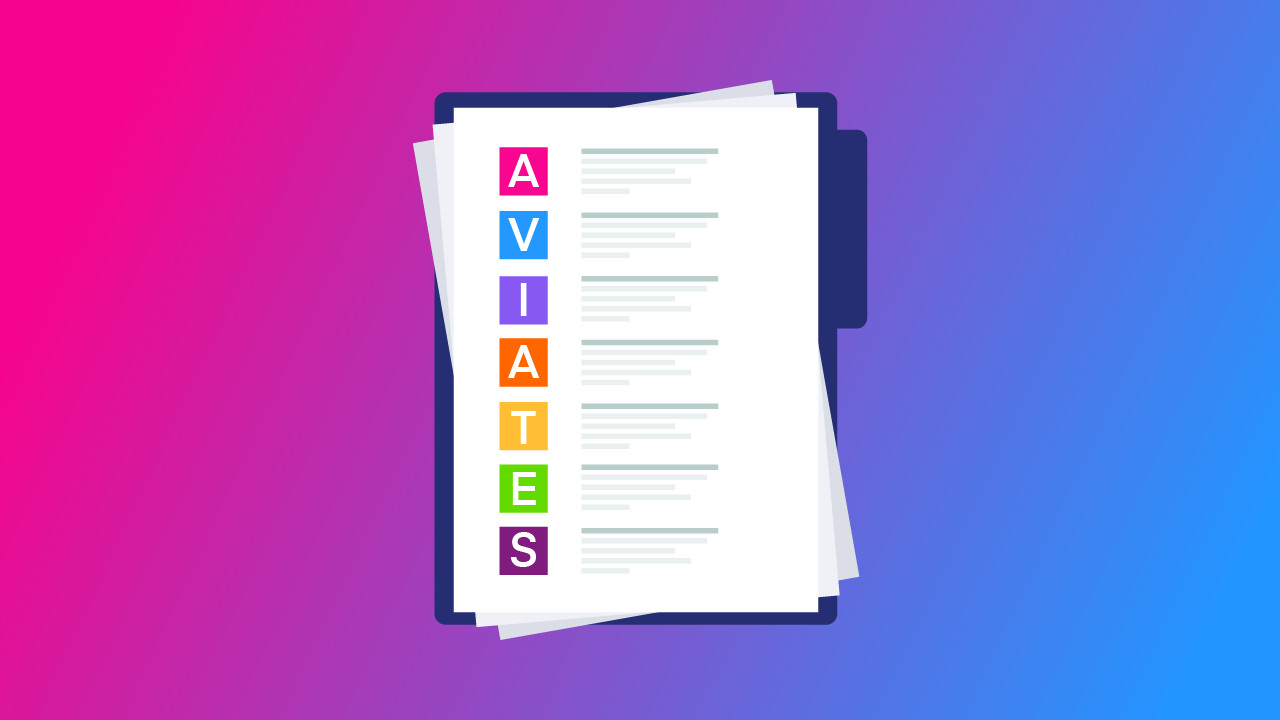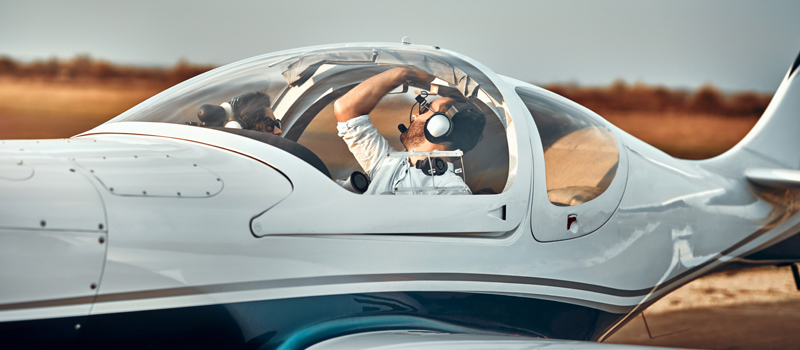We’ve all been there, sat in a departure lounge, and a pilot has strolled past. You will more than likely have noticed that the pilot’s uniform is normally adorned with stripes. These aren’t just for decoration; they actually mean something. Pilot ranks are denoted by stripes, and today, we will show you what each rank is and what the stripes mean.
The stripes on a pilot’s uniform are designed to denote rank. The highest-ranking pilot or aircraft commander will traditionally have 4 stripes on their uniform. The co-pilot, more commonly known as the ‘first officer’, will have either 3 or 2 stripes.
There are quite a few differences between the ranks and further subdivisions. Here’s what you need to know.
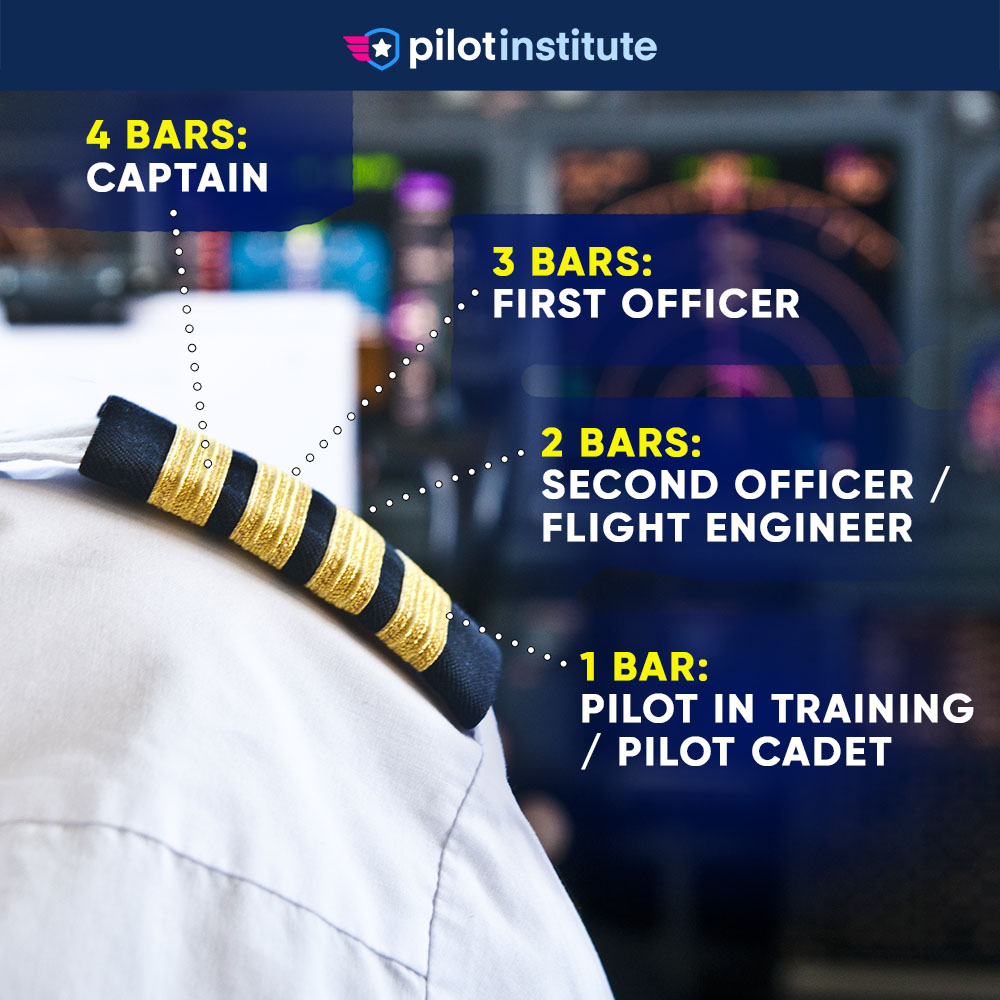
What Do the Pilot’s Stripes Mean?
The stripes on a pilot uniform denote a person’s rank onboard the aircraft. Where the stripes are located depends on the company uniform regulations, but there are generally two areas that they are most commonly found: –
- Epaulets – These are the shoulder tabs on a pilot’s uniform. They may be located on the pilot’s shirt, sweater, and even raincoat.
- Sleeves – Many airlines also have stripes or ‘rings’ on the lower sleeve of the uniform. The number of stripes in this area will match those found on the pilot’s epaulets.
The number of stripes, by convention, means different things. Here’s a detailed breakdown: –
4 Stripes on a Pilot Uniform
Meaning: Aircraft Captain or Commander
4 stripes are traditionally used to denote that the pilot wearing them is the Captain, also known as the aircraft commander.
The stripes are for more show or’ bragging rights’.
They actually serve an important purpose. In most commercial operations, there is more than one pilot. One in command, the other acting as a deputy commander. Other personnel, such as handling agents, fuelers, engineers, and flight attendants, need to know who to direct any issues or problems.
The stripes allow them to instantly identify who is in charge onboard the aircraft. This can be particularly useful if the Captain is significantly younger than the first officer. People naturally assume the older pilot is ‘in charge’.
3 Stripes on a Pilot Uniform
Meaning: Senior First Officer or First Officer
3 stripes are commonly denoting either the first officer or senior first officer onboard the aircraft.
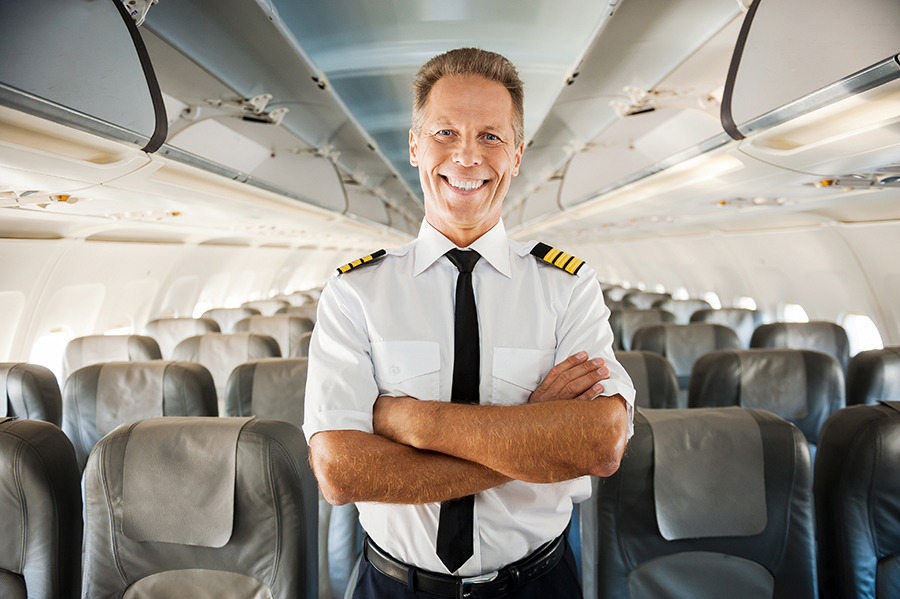
Is there a difference?
Indeed, there is.
Generally speaking, a senior first officer will perform precisely the same role as a regular first officer but will have more flying hours.
However, the required number of hours to graduate to the level of senior first officer varies from airline to airline. Some specify a certain number of flying hours. In contrast, others will base the rank purely on time served within the company.
Some airlines make no distinction between senior first officers and regular first officers. Both will wear three stripes on their uniform.
2 Stripes on a Pilot Uniform
Meaning: First Officer, Second Officer, or Cadet Pilot
Again, there isn’t a strict convention about when an airline uses two stripes on their uniform. Some airlines will use two stripes for newer pilots or those with less experience. However, this is not always the case.
In certain cases, airlines assign rank based on time served within the company. This is called ‘seniority’. Consequently, a situation might very well exist where a two-stripe first officer has thousands of hours more than the Captain. Still, they may only have two stripes due to joining the company later!
You’ll also see two stripes often in Asian airlines, where the rank of ‘second officer’ is prevalent.
Again, the stripes aren’t just for decoration. They will quickly and easily enable the commander to see whether he is flying with an experienced operator or someone relatively new, without asking pointed questions about flight experience.
1 Stripe on a Pilot Uniform
Meaning: Cabin staff or Operational staff.
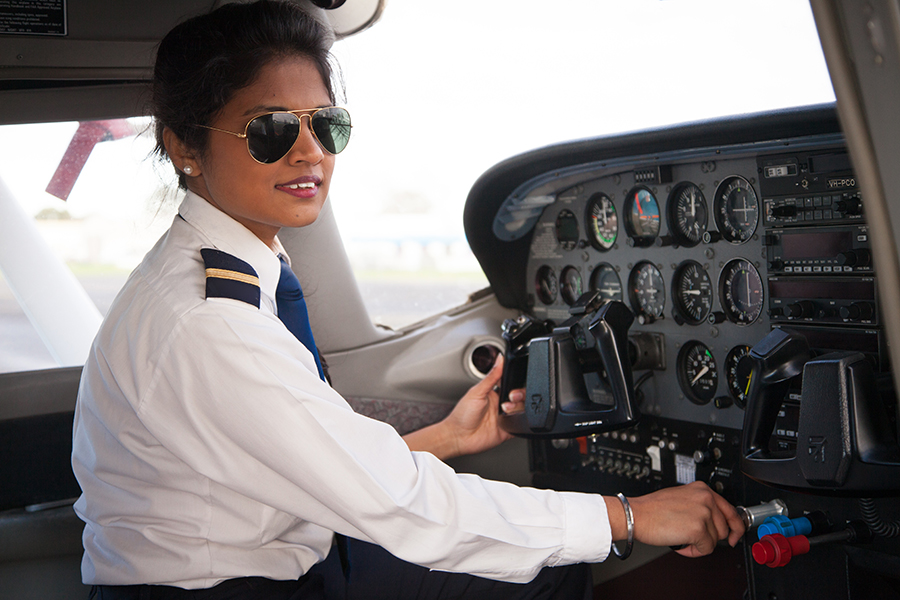
It is exceptionally rare to see one stripe on a pilot uniform, if ever.
There is a high likelihood that if you see a uniform with one stripe, the person wearing it could be a flight attendant. Some airlines award a single stripe to the cabin crew’s ‘purser’ or ‘in charge’. Occasionally this may also be used to denote operational staff working for an airline.
What Are the Ranks of Pilot?
We’ve used terms like “captain”, “first officer”, and “second officer”, but what do these terms mean? Here’s a quick guide: –
Captain
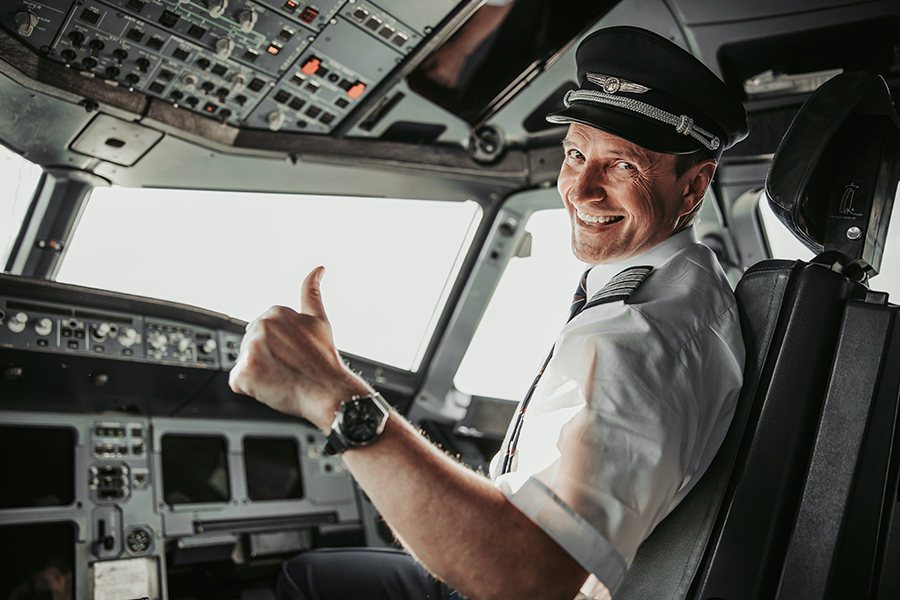
The Captain is also known as the aircraft “commander” or ‘Pilot in Command”. Ultimately, the pilot in command is a hugely responsible position. They are responsible for literally everything that happens onboard and to the aircraft.
In fact, the FAA gives rules mandating the extent of the commander’s responsibility.
And, they are wide-reaching, even permitting the pilot in command to deviate from the rules if they consider it prudent to do so (in an emergency).
The pilot in command will oversee everything that goes on onboard the aircraft, including: –
- How much fuel to take
- Who flies the aircraft
- Where the aircraft lands
- What to do in an emergency
- Where the bags are loaded
- Where the passengers are seated
- When the cabin crew can perform their service
- Signing the load sheet
- Signing the aircraft technical log to say it is airworthy
- Delegating tasks to each crew member
- Overall aircraft safety
If any of the above decisions are incorrect, the Captain, and only the Captain, will be held legally accountable.
Those four stripes feel pretty heavy all of a sudden!
First Officer
The first officer is also commonly known as the “co-pilot”. A better way to think of them is as the ‘deputy captain’. If the Captain was to become incapacitated, it would be up to the first officer to assume command of the aircraft, so the role still requires a high degree of professionalism and responsibility.
The co-pilot will also fly the aircraft. Most days, the Captain will fly one leg, and the first officer will fly the other, under the Captain’s supervision.
When acting as ‘pilot non-flying’, the first officer will perform the following tasks as delegated by the Captain: –
- Operating the radios and communication equipment
- Performing an exterior inspection of the aircraft
- Monitoring the captains flying and calling out any deviations
- Ensuring that the load sheet is checked
- Checking the captains’ inputs into navigation equipment
- Liaising with air traffic control
- Filling in flight paperwork
- Configuring the aircraft during takeoff and landing
- Reading checklists to the Captain
Second Officer
As we said above, second officers aren’t that prevalent in western airlines. Generally, they will perform similar roles to a ‘regular’ first officer, with a few exceptions.
Second officers are also referred to as ‘cruise pilots’. This means that they cannot handle the controls below a certain altitude. This role normally exists so that inexperienced pilots can gain valuable flight hours in the environment where they’ll be working, in periods of low workloads, such as the cruise.
They can also get a good feel for what is happening and observe during busy periods, ready for when they accumulate enough hours to become the first officer.
How Many Stripes Can a Pilot Have?
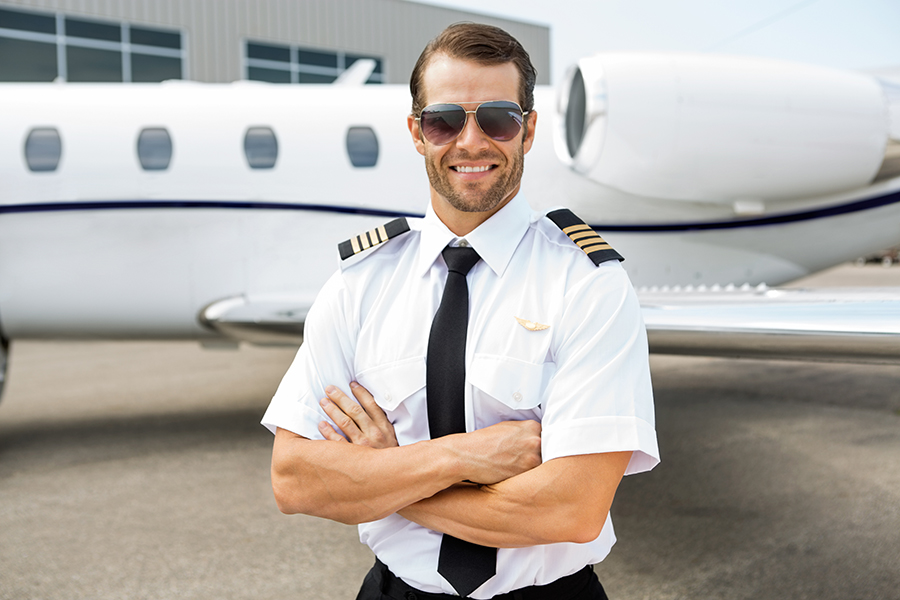
The maximum number of stripes that a pilot can have is four. There isn’t a rank above aircraft commander, and there can be only one Captain operating on board at once.
However, certain airlines do denote very senior pilots in a few ways.
Training captains or flight examiners may often be given a star above their four stripes. Other airlines may add a naval or artillery loop to the uniform to denote management pilots.
Is a Pilot Always Called Captain?
Not all pilots are called ‘captain’. It is a name limited to those who have been awarded four stripes. The first officer is a pilot. They do fly the aircraft; however, they are not the Captain because they don’t hold legal responsibility for the aircraft.
Conclusion
Knowing what pilot stripes are will allow you, and everyone else, to tell who is the Captain, the first officer, and perhaps even who the second officer is. The ranks and stripes below Captain vary depending on the airline, but the guy wearing 4 is always in charge! It’s a long road to get to be a captain, but every journey starts with the first step. Why not make yours here?
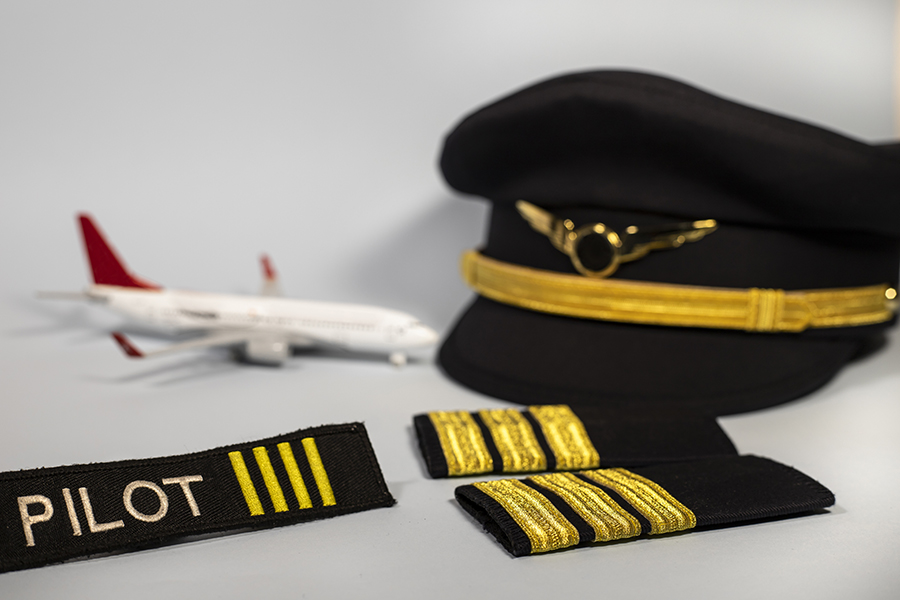
 @pilotinstituteairplanes
@pilotinstituteairplanes
